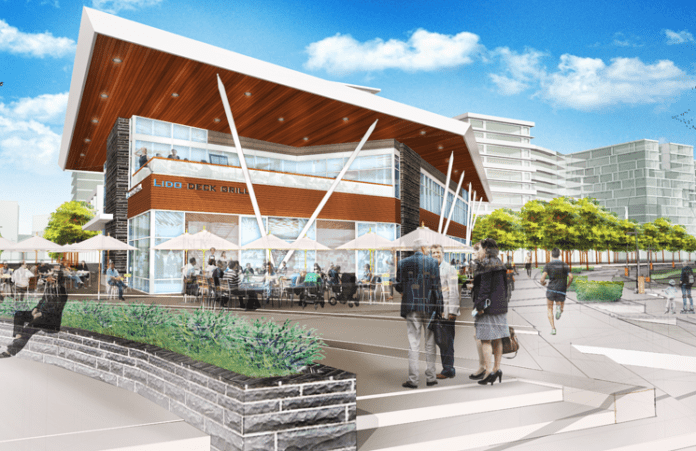Construction is poised to start this year on the long-awaited $1.3 billion Waterfront Vancouver project despite ongoing concerns about an oil transfer facility proposed downriver, a late 2015 federal ruling that reduces the height of two residential towers inside the project and continuing efforts to line up permanent project financing.
With nearly $50 million invested so far in upfront redevelopment costs, both Gramor Development President Barry Cain and city of Vancouver officials say construction is set to begin. Phase one will include five buildings inside the 32-acre mixed-use site.
“This project needs to start generating some revenue,” said a developer familiar with the project.
To that end, Gramor is in the final stages of subdivision plat approval with the city. Once in place, Gramor and its group of Vancouver investors likely will sell certain sites inside the massive development to generate cash and improve their financial positions, he said.
Tualatin, Ore.-based Gramor has been the lead developer on the project since soon after Boise Cascade Corp. announced plans to close its industrial paper mill on the site and sell the property in 2008.
Cain said construction will start by mid-year on a 60,000-square-foot office building and a two-story waterfront restaurant building. The nonprofit M.J. Murdock Trust has signed to lease 18,000 square feet in the office building while Twigs, a Spokane-based restaurant chain will take 8,320-square-feet in the restaurant structure. Both buildings are to be finished late this year, Cain said.
Construction could also start on three additional buildings that include an apartment tower, a condominium building and another office building, all to be finished in 2017 or early 2018.
“The infrastructure is in place, we have signed major tenants for the first office building and our first restaurant (six are planned),” Cain said. “The city has done its job with the access roads at Esther and Grant. Columbia Way has been extended, infrastructure is in place and the city is moving ahead with park and pier construction. This is the biggest thing in the Portland metro area.”
Cain said Gramor is getting financing in place “for everything” and said he is pleased with the preleasing activity. He expects to soon announce an agreement with a hotel operator for the site.
“This project is going to be spectacular,” he said.
Chad Eiken, Vancouver’s Economic Development director, said work on a seven-acre city park, trails and a suspended pier are top city priorities this year. The park is in for final permitting, which will allow work to start within the next month or two, Eiken said.
While nothing is certain, Eiken said that he is “feeling much more confident” that waterfront building construction will get started this year.
“At the end of 2015, the Federal Aviation Administration reconsidered height limits on some of the buildings in the project,” Eiken said. “A 14-story residential tower will now be seven stories. The good news is the changes still meet all the minimum population densities required by the city.”
Anne McEnerny-Ogel, Vancouver mayor pro tem, said she too is encouraged by the project’s momentum.
“I think things will move quickly when people start to see some action,” she said. “I don’t think this project is on the radar in Portland. When things get going, the TV cameras will be here.”
So far, a combined nearly $50 million has been spent on access roads and other infrastructure at the site, Eiken said. The money has come from several sources including Gramor and the investment partners, the city as well as from state and federal grants.
He describes the city’s public park project – to include the suspended pier, trails and the park itself – as a “huge investment” with a price tag of between $20 million and $25 million. That brings total upfront investment in this project to about $70 million.
Port relationship improves
Meanwhile, Cain said he’s “on the road to a better relationship” with the Port of Vancouver.
He’s hopeful that the port’s proposed oil transfer terminal planned a few miles downstream from the waterfront project will fade into oblivion. He sees the industrial terminal as incompatible with an urban-residential waterfront development. At the same time, he’s hopeful that the port will bring compatible redevelopment to the 10 acres it owns at Terminal 1 where the Red Lion at the Quay once operated. The property adjoins the Gramor project.
“We would like to see them (the port) do something there that we can’t do… a visitors center or some other signature building,” Cain said.










